The best BBQ Delivery Boxes in the UK from small sustainable British Farms
The age of Regenerative Agriculture vs. Industrial Farming could be prophetically summed up by Charles Dickens’ famous opening lines to a Tale of Two Cities:
“It was the best of times, it was the worst of times, it was the age of wisdom, it was the age of foolishness, it was the epoch of belief, it was the epoch of incredulity, it was the season of Light, it was the season of Darkness, it was the spring of hope, it was the winter of despair, we had everything before us, we had nothing before us…”
Of course, Dickens’ book was published about 150 years before the words ‘Regenerative Agriculture’ were forming on anybody’s lips (and if you’re just reading about it for the first time, this quote will make a lot more sense once you’ve finished the article…).
It’s a movement still in its infancy in our very modern, very foolish, and often dark times of a broken agricultural system. A system that works to feed climate and social crises while degenerating the land upon which it is reliant to grow food.
But, the roots of Regenerative Agriculture are in fact much older. They lay with Indigenous cultures who have long-understood that we exist as part of nature, not above it. And as such, we need to live in a way that respects the land and preserves it for future generations.
Integrating these learnings into our modern food systems, regenerative farmers are optimistic that farming can be part of the solution to the climate crisis rather than labelled as one of the biggest contributors to it.
So, on eve of Groundswell – when 5,000 farmers are due to descend upon Lannock Manor Farm in Hertfordshire to discuss the alternative future for our food, ecosystems, and climate change – we’re delving into ‘What is Regenerative Agriculture?’ and what does it mean for those of us who love to eat, but are pretty far removed from how our food is actually produced…
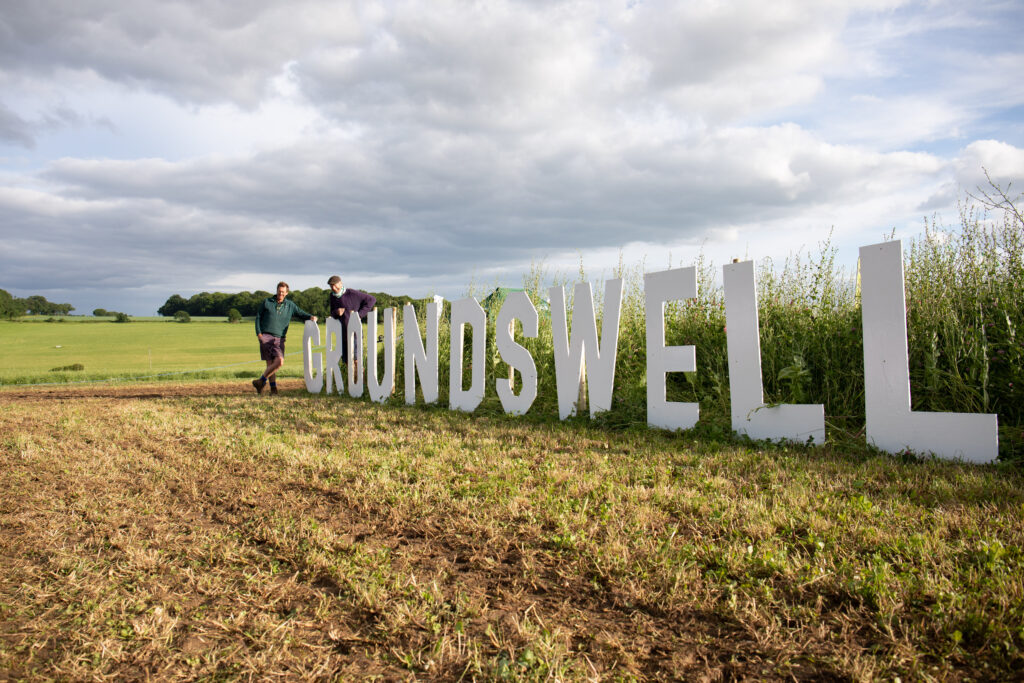
So, what exactly is Regenerative Agriculture?
Regenerative Agriculture focuses on improving soil health above all else – because regenerative farmers maintain that all farming begins with the health of the soil. As such, you’ll often hear regenerative farmers calling themselves ‘soil farmers’.
Industrial-turned-regenerative farmer John Cherry, co-founder of Groundswell, explains:
“Before we treated soils purely as a medium to grow food. But, once you realise it’s one of the most vital and vibrant ecosystems on the planet you want to make sure you keep it that way.”
Founder of The Ethical Butcher, an online butchers that delivers meat to your door from regenerative farms, Farshad Kazemian believes this the most rewarding way of producing food:
“Regenerative farming means less harm. It means we can feed the world better quality food, while increasing biodiversity above and below ground, for future generations. It means farmers are no longer beholden to chemical companies and the fluctuating costs of artificial fertilisers. Who loses in this method? Well, the giant agri-tech businesses. But, everyone else wins.”
And for Seth Itzkan, whose life-long mission is to get people to understand regenerative agriculture, it is not only about producing food, it’s also the key to mitigating climate change:
“Agriculture and livestock management is the most powerful tool to create a greener planet,” Itzkan argues, referencing an increasing body of evidence that shows how grass can help to regulate the climate(1). Breaking this down, he explains:
“Key to grassland health is the proper role of ruminants, like cows, which when grazed in regenerative ways, can be an important solution to the world’s climate and hunger emergencies. That, combined with regenerative cropping techniques, permits farmers and ranchers to feed the world while becoming heroes of the climate.”
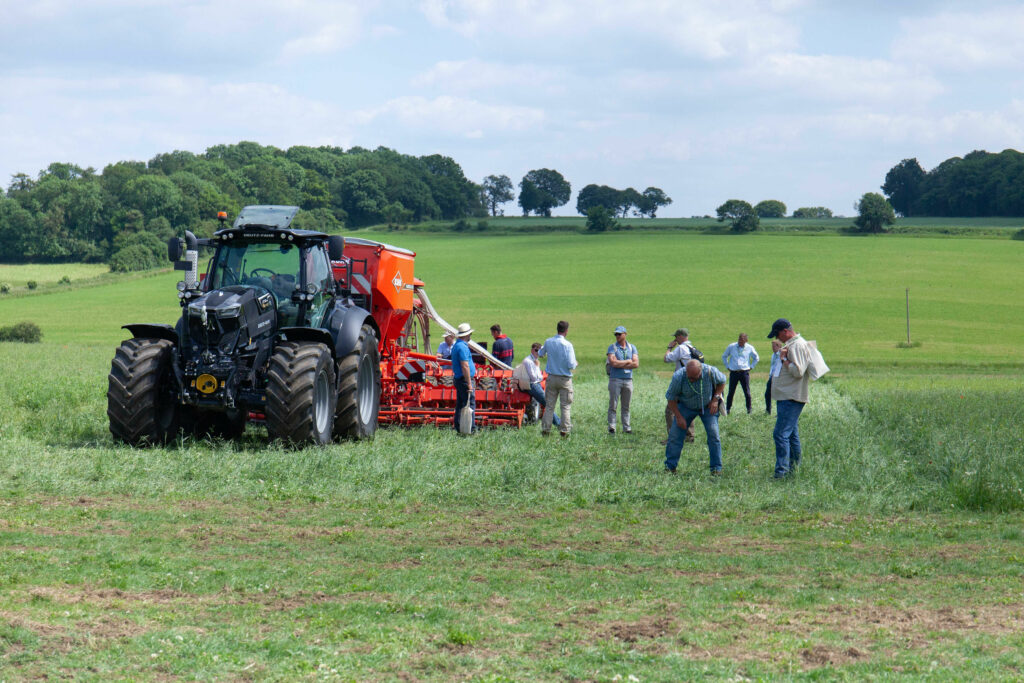
A tale of two farms – a (very) brief history of industrial farming:
Essentially, modern-day farming has become more intensive over the past 75 years as chemical fertilisers, herbicides and pesticides meant we could use different concoctions to grow food faster and kill weeds and bugs more ‘efficiently’.
This was great, at first.
In the 1950s, following two world wars, the focus was to grow more food in the UK so, should we ever end up at war again, we could feed the country and be less reliant on imports.
However, two things have happened as a result of doubling down on industrial-style farming.
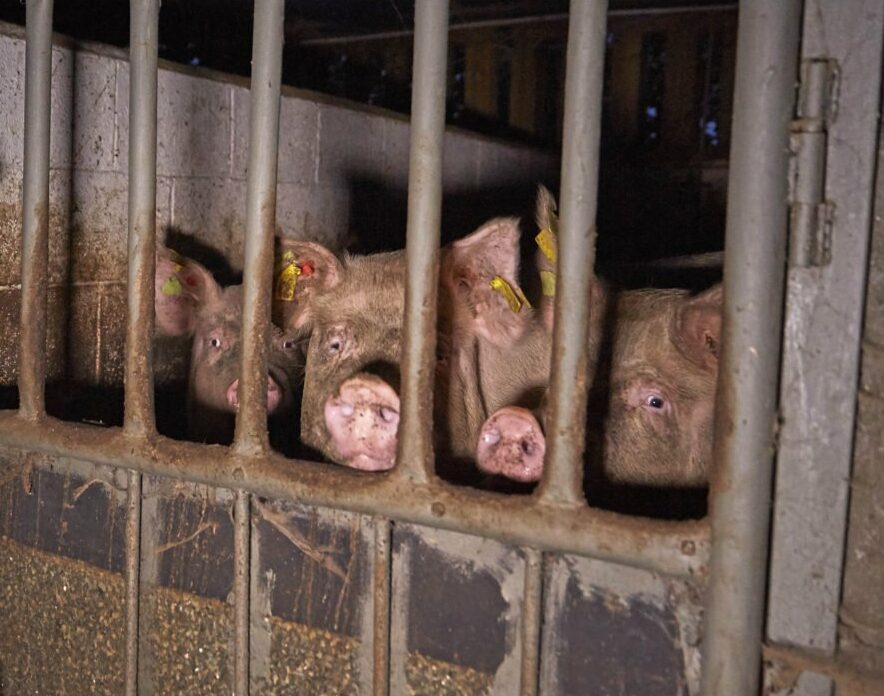
1. The globalisation of the food supply chain
The first is that using these chemicals meant everything became bigger. Instead of relying on labour-intensive farming methods, farmers could now plant acres and acres of the same crop and spray them with chemicals to help them grow. This meant fields got bigger and farms got bigger as farmers could manage more acres more easily. Machines got bigger – and more expensive. As did the amount of chemicals required.
But, this abundance of food is not used to feed the nation…
“Most arable farmers are commodity producers. We’re growing wheat and barley but we’re not selling it to the local mill who sells it to the baker,” admits Cherry who owns a 2,500 acre farm in south-east England.
“About 70% of the grain grown in this country is sold to create biofuels or put on a boat to feed chickens in factory farms in Egypt. We’re now part of a global supply chain when we should be growing food for local people. We need to regenerate the food system as well as the soil.”
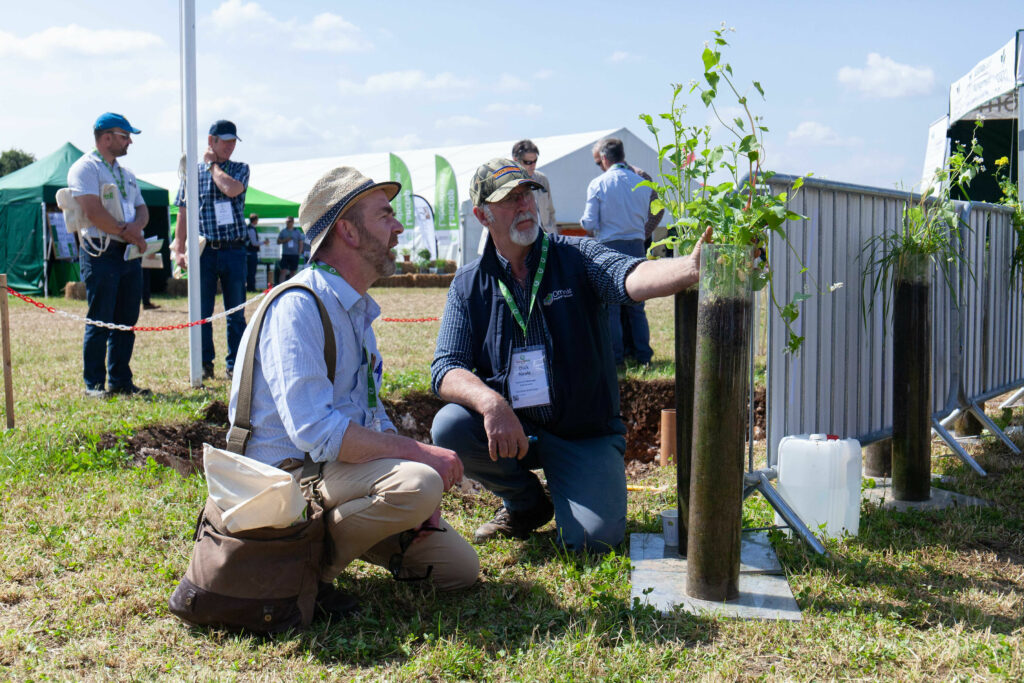
2. Killing the soil
The second impact of chemical farming is that each time we sow and harvest our crops, we are depleting our soils. There’s only so many times we can do this before we run out of fertility completely. Do you remember the 2018 headlines that said we only have 30-40 harvests left?
We are only just starting to understand how complex ‘dirt’ really is. It turns out there are more microbes in one teaspoon of healthy soil than there are people on this planet. The chemicals aren’t just killing the bad stuff, as we first thought. They’re decimating all the good stuff, too.
This is catastrophic because it’s getting more difficult to grow crops in soil that has been fed a relentless concoction of herbicides, fertilisers and pesticides – and even the best farmers won’t be able to grow food once we’ve killed it completely.

A tale of two farms: Regenerative farming
So, a regenerative farmer is essentially a farmer that understands the supreme importance of the soil. They grow crops and they graze animals, but their primary goal is to do so in a way that improves soil fertility.
They can do this in multiple ways, for example by planting cover crops to protect the soil from erosion, planting trees to help mitigate flooding, or managing cattle so they graze and fertilise specific areas of fields at specific times.
The brilliant thing about this is that it all works together to increase the carbon stored in the soil where it is a building block of life – and, importantly, takes it out of the atmosphere where it contributes to global warming.
“The other brilliant thing is that you can taste the difference in the meat. It truly is a win-win situation for the farmers, for the animals and for customers,” insists Kazemian whose business model is built on supporting farmers like John Cherry, by giving them a UK outlet for their produce.
“We all need to eat and none of us want to participate in the destruction of the planet; buying food from regenerative farmers is a great way to support them to transition.”
But, this isn’t a tale of just two farms, really – nothing is that black and white.
Kazemian is clear that there is a wide spectrum of farms with “industrial” on one side and “the gold standard – Regenerative, Organic and Pasture for Life” on the other. Plus, a whole bunch of different farms and labels and farming concepts, in between.
There are a couple of beliefs that are fundamental to the Regenerative Agriculture movement, though.
1. “No Till”
The first is that ploughing is a practice that needs to stop. We started ploughing to smash up the soil and plant seeds. At first, this was thought to reinvigorate the soil. And at first, it did.
But, slowly the soils have become harder and harder to plant in and we now know that ploughing is the physical destruction of the landscape of microscopes – which is essential for soil fertility.
Instead, regenerative farmers are advocates for minimising disturbance while sowing seeds, using tools such as no till drills.
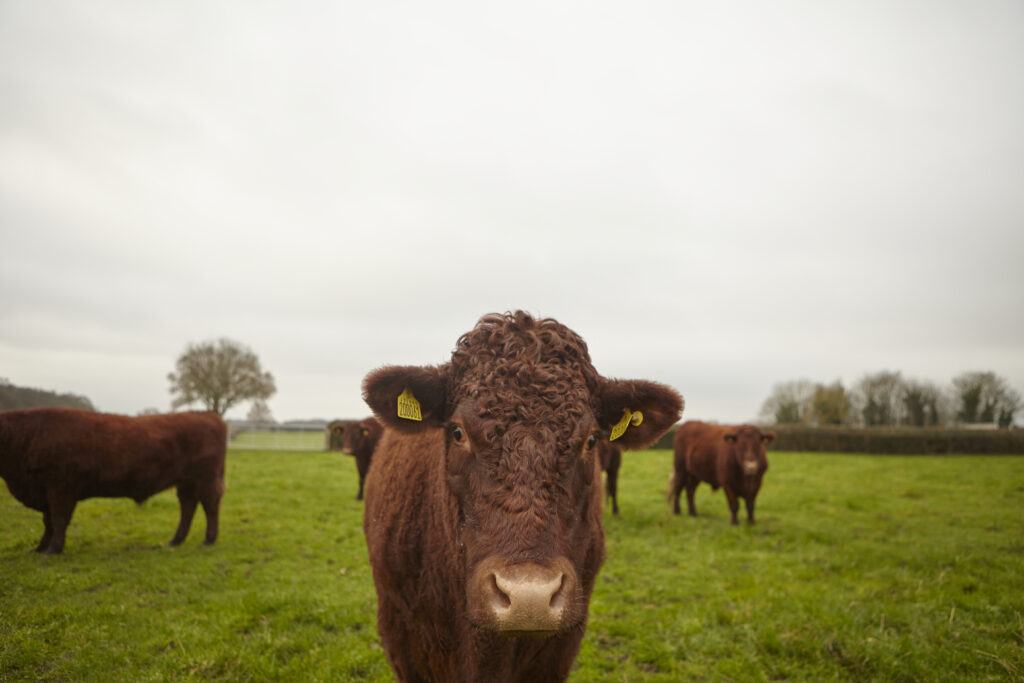
2. Cows are part of the solution, not part of the problem
Another fundamental belief is that ruminant animals (i.e. cows and sheep that eat grass) are an essential part of the regenerative landscape, because of the way they graze and how their manure fertilises the soil.
“We’re still using fertilisers and sprays – less every year – but we’re still in transition. I think we need more animals to reduce this further,” says Cherry.
Itzkan, co-founder of Soil4Climate, a nonprofit that advocates for soil restoration as a climate solution, insists that cows are not the problem, and are instead part of the solution.
“Even from a climate point of view – even if we didn’t need to eat. We still have to restore the depleted soils. It just so happens that a by-product of the best way to take the carbon out of the air produces meat,” he says.
“There needs to be more meat in the future, not less – more. We need to have less pork and chicken [reared in factory farms] and more red meat [grazing on grass]. Absolutely managed properly, and not feeding them grains from soy grown where the Amazon rainforest used to be. That’s the point that people need to understand.”
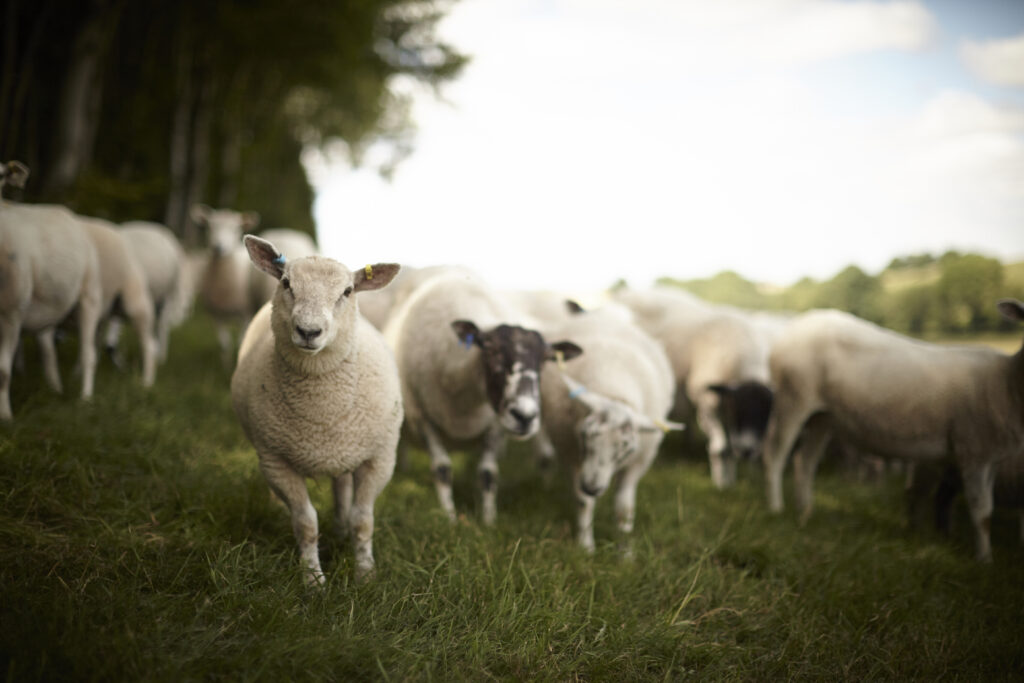
Regenerative Agriculture: Everything before us
The common Regenerative vision is one of lush green meadows of mixed plants and crops, alive with butterflies and bees, grazed by animals on top of a thriving ecosystem beneath the soil, filled with microbes and bugs and worms. This all works together to provide nutritious food in tune with nature and, crucially, to remove carbon from the atmosphere and store it in the soils.
“I used to spend months going up and down the farm on a tractor destroying the soil. Now we get the worms to do the work for us,” says Cherry.
“Before I was bored of farming. It wasn’t stimulating. Now, it’s less physical but more intellectual work – and so much more satisfying. I spring out of bed and can’t wait to get going. I find joy in moving the cows through the herbal lay with the bees and the butterflies, it’s utter heaven. Plus, our business gets more and more resilient every passing month because we’re not nearly so exposed to the cruel fertiliser market or the wheat market. The more we can get away from big business and the more we feed local businesses and people, the more resilient we will be.”
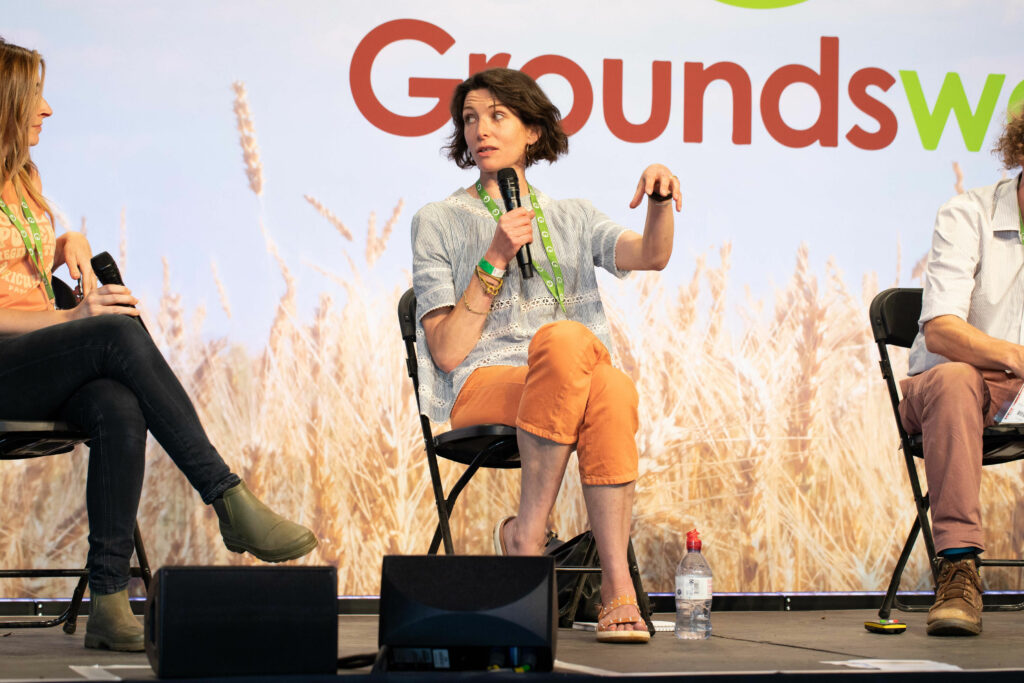
Although all working towards a common vision, achieving this requires each farmer to learn and adapt to the unique conditions on their land. This is not a one-size-fits all solution.
If this is not challenging enough, it also requires a certain amount of risk, as well as the means, to begin to move away from the ‘knowns’ of Big Agriculture and the Business As Usual policies of the government.
But, against incredible odds, the movement is growing. In 2016, Groundswell welcomed 500 farmers; tomorrow it welcomes 10 times that amount.
And these farmers are not just toiling in the fields. They’re also monitoring soil activity, collecting data and sharing knowledge in WhatsApp groups and on social media, writing blogs and recording award-winning podcasts.
“It’s a non-stop process of learning and development,” says Kazemian. “We’re seeing the benefits first-hand. We know that we’re doing the right thing.”
(1) References
Lal, R (2020) Managing soils for negative feedback to climate change and positive impact on food and nutritional security, Soil Science and Plant Nutrition, 66:1, 1-9, DOI: 10.1080/00380768.2020.1718548.
Rowntree JE, Stanley PL, Maciel ICF, Thorbecke M, Rosenzweig ST, Hancock DW, Guzman A and Raven MR (2020) Ecosystem Impacts and Productive Capacity of a Multi-Species Pastured Livestock System. Front. Sustain. Food Syst. 4:544984. doi: 10.3389/fsufs.2020.544984
https://www.frontiersin.org/articles/10.3389/fsufs.2020.544984/full
Kurtz, D. et al. (2020) Impacto Del Pastoreo En Propiedades Fisico-Quimicas De Un Psammacuent En Pastizales Del Nordeste Argentino (The impact of grassland management on physical and chemical properties of a sandy soil in northeastern Argentina). Revista Argentina de Produccion Animal VOL 40 N° 2: 1-13 (2020) https://www.crea.org.ar/wp-content/uploads/2021/10/2020-PP-Kurtz-Ditmar-y-otros.pdf
Stanley, P. L., Rowntree, J. E., Beede, D. K., DeLonge, M. S., & Hamm, M. W. (2018). Impacts of soil carbon sequestration on life cycle greenhouse gas emissions in Midwestern USA beef finishing systems. Agricultural Systems, 162, 249-258. https://www.sciencedirect.com/science/article/pii/S0308521X17310338?via%3Dihub
Teague, W. R., Apfelbaum, S., Lal, R., Kreuter, U. P., Rowntree, J., Davies, C. A., R. Conser, M. Rasmussen, J. Hatfield, T. Wang, F. Wang, Byck, P. (2016). The role of ruminants in reducing agriculture’s carbon footprint in North America. Journal of Soil and Water Conservation, 71(2), 156-164. doi:10.2489/jswc.71.2.156 http://www.jswconline.org/content/71/2/156.full.pdf+html
UN FAO (Food and Agriculture Organization of the United Nations). 07, May, 2020, Sustainable Agriculture, Land use in agriculture by the numbers. https://www.fao.org/sustainability/news/detail/en/c/1274219/


